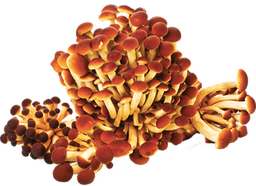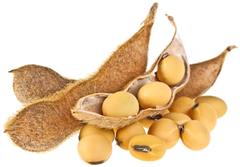Panel discussion on...
Alternative proteins
The new frontier
Global events and the enduring trends of food security, health and well-being, and sustainability are changing the way people look at the future of food. Consumers are increasingly shifting their focus at a time when the global population is seeing significant growth. The United Nations has projected that the global population will reach 9.7 billion by 2050 – showing a crucial need for products that support a more resilient food system. On top of that, the World Food Program reports that 349 million people across 79 countries are facing food insecurity, which is an increase of approximately 200 million people compared to pre-pandemic levels.
Taste
Plant-based burgers and ground meat alternative products are just the beginning of what this category can deliver. The industry is exploring many technologies to improve the eating experience in terms of product taste and texture. At Cargill, we are collaborating with CUBIQ FOODS to expand the commercial use of novel fat technologies that can help close the gap, replicating the experience of animal fat in terms of visual appearance, mouthfeel, and bite.
Whole-cut technologies that mimic animal muscle tissue and cultivated protein can be used to develop entire meat analogues or components for hybrid blended products. The following are some key examples of existing whole-cut technologies:
- An existing and common technology leveraged for whole muscle cuts is extrusion, and although this technology is not new to the category, innovation in this area continues to expand. New techniques are evolving, and scientific research continues to better understand what is occurring within the extruder.
- Fermentation biomass, such as mycoprotein to generate whole muscle cuts, is another area with large advancement over the past five years. Instead of mycoprotein only being an ingredient mycoprotein, the biomass is being leveraged to create whole muscle cuts.
- 3D printing is another technology supporting appearance delivery of whole muscle cuts with continued work related to their texture. Many companies are working towards improving this technology including Cocuus, an innovator in 3D bioprinting technology for the production of alternative proteins.
Cost
To truly be a solution for the future, alternative proteins need to meet a variety of price points to become affordable and accessible to more people. When you consider the modern meat industry, scale and efficiency have been built into the production process over more than 70 years of research, specialization and system improvements. For alternative protein, driving cost efficiency is going to take innovative partnerships across the value chain to support the scaling of technology and increase production, from the upstream procurement of raw material inputs to increasing capacity of large-scale manufacturing.
Nutrition
Health is among consumers’ chief reasons for choosing alternative protein. There are a few challenges to understanding the health effects of alternative proteins, such as sodium, clean label and plant-based nutrition research including product digestibility, and an understanding for how the components of meat analogues is being absorbed and nourishing the body. Supporting university and public research is critical to investigating the functional properties of plant proteins and understanding their best processing and application for optimal product quality. Sustainability is another key consideration for alternative proteins, but further research is required to truly understand alternative protein products’ benefits and sustainability impact.
At Cargill we are committed to measuring and accelerating the sustainability of both animal protein production and alternative proteins through investments in environmental and animal-science based methods to reduce our impact.
Overcoming barriers
We believe consumer choice will be a driving force in protein. Alternative proteins will become just another protein that provides consumers important nutrients and more choices, joining options they already have—from beef, to poultry, to seafood, to nuts and legumes. We expect consumers will move easily between these choices, choosing between animal, plant-based, and cultivated, based on what they have a taste for, what dish they are preparing, who they are serving and what personal goals they have for their meal at that moment in time, which could include anything from indulgent to health to sustainability or a combination of these things.
Cargill has conducted a variety of consumer research projects to understand and focus on key areas of improvement to meet their evolving needs in this category. Key learnings and actions include:
- Plant-based meat alternative products can be hard to find, so we are partnering with our strategic accounts in both retail and foodservice to meet these consumers where they are.
- We’ve found that while burgers were exciting at first, consumers want more options so we’re exploring product assortment and flavors.
- Products do not always offer the taste or texture that consumers like, so we have been working independently, collaborating with technology leaders, like CUBIQ FOODS, and partnering with customers to develop items that meet or exceed consumers taste and texture expectations.
- They often have too many ingredients, so we have actively been working on more simple formulas that also deliver on the taste and texture consumers enjoy.
- These products can be expensive, so we have taken the role of being the private-label provider to offer a more price-competitive selection.
We expect pricing will decrease with additional ingredient supply and manufacturing efficiency – scale will drive a lot of cost improvement for the category.
Scaling innovations
Today, there’s an incredible explosion of data and different types of technologies coming together in alternative protein: plant-based and cultivated. The connectivity across technologies, like precision fermentation, where we can take biological systems and make unique compounds for ingredients and create entirely new protein solutions, has the potential to be transformative.
This is a pivotal moment for the whole food system. The innovation we’re seeing in this category is great, but it won’t make an impact unless it can reach people at scale. We must direct R&D funding to the alternative protein category to get us there.
When investments are made in the fundamental technologies, the application of those sciences and new processes will have an enormous impact in the field. The work to be done reaches far beyond the scope of any one company, organization or industry. Bringing new proteins to the mass market will require collaboration across the entire ecosystem – public and private partnerships – to support the research and innovation needed to improve product experiences, increase production efficiency, increase understanding of these products’ benefits and sustainability impact, and accelerate new concepts to viable, market-ready solutions.
While challenges exist for alternative protein, there’s promising commitment and investments to find solutions across taste, cost and nutrition. Alternative protein will continue to be a core area of overall protein category growth with focus on key areas: improving products, helping innovators scale technology, and increasing accessibility of alternative proteins.
Panelists
References and notes
- FAO. 2011. World Livestock 2011 – Livestock in food security. Rome, FAO. https://www.fao.org/3/i2373e/i2373e.pdf
- Bloomberg Intelligence, Plant-based poised for Explosive Growth, August 2021. https://www.bloomberg.com/professional/bi-research/?dyn=plant-based-foods



















